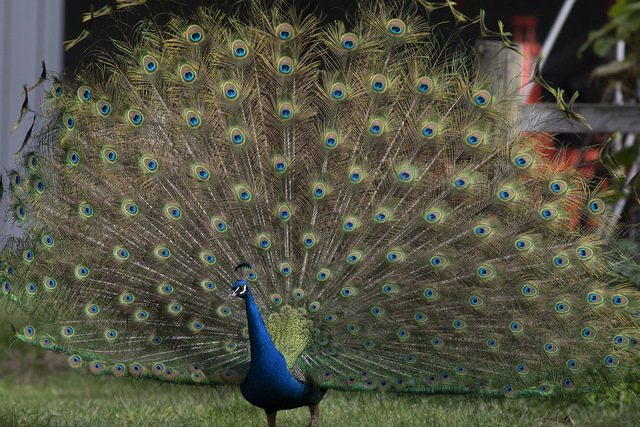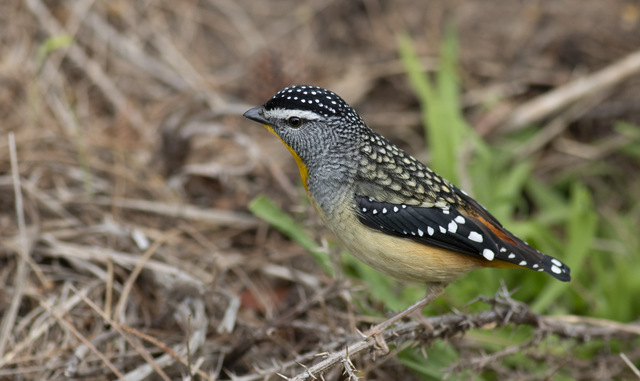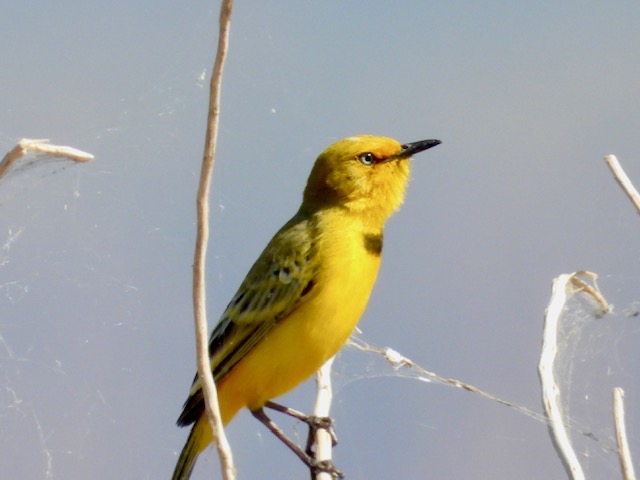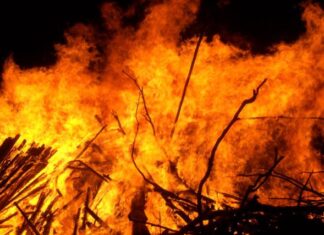I haven’t had a great amount of time to go out birdwatching over the past few weeks, but I went for a walk one sunny afternoon in the Ocean Grove Nature Reserve.
I had a close encounter with a beautiful male spotted pardalote that looked like it was checking out a hollow in the ground as a nesting spot.
Spotted pardalotes nest in hollows or burrows underground. The wings, tail and head of the male spotted pardalote are black and covered with small, white spots, and they have a pale eyebrow, a yellow throat and a red rump. Females are similar but have less-distinct markings.
I also visited Robyn who lives in Wallington, and watched the male peacock in her garden showing off or displaying his feather quality to the female peahen, and the quality of the his plumage was outstanding.
I also had a walk around Blue Waters Lake in Ocean Grove with residents and members of the Ocean Grove Coastcare group. We saw a spotless crake, which was great, and also a buff-banded rail, as well as around 30 other species, so it was a lovely morning.
I think many residents of Ocean Grove are travelling at the moment, or just back from their trip north.
Barry and Bernie Lingham have just returned from Cape York, where they saw a pair of palm cockatoos, which were a highlight of their trip. They spotted more than 200 species of birds between Ocean Grove and Cape York.
I received an email from Carole, who has just returned from a birding trip to Darwin and Kununurra, where she did not expect many varieties of birds in the dry season, but was pleasantly surprised. She was thrilled with the birdlife around Lake Argyle. She took a boat trip around the lake which left the jetty at 4am, and the chats on Chat Island were superb.
On her return to the Bellarine, Carole was sitting in a supermarket car park near Drysdale and onto the tall wooden fence landed a couple of spotted doves. They are such ‘common’ birds that Carole hadn’t looked closely at them before. It’s a bit like me being captivated by the peacock – a non-native bird that is just stunning.
I received an email from Karen, who like Barry and Bernie, has recently travelled to Cairns and northern Queensland. One bird that Karen did not photograph was the pale-headed rosella although she got a good look at this species through her binoculars. The species that Karen did photograph included the nankeen night-heron, bush-stone curlew, pied butcherbird, brown honeyeater and buff-banded rail.
I received an email from Geoff who had to slam on his car brakes to avoid running over a pair of wood ducks on the road near his house. Geoff observed that the wood ducks’ behaviour at this nesting time of the year, in nesting season, can be erratic, and that they do not nest near water.
Wood ducks nest in tree hollows that are not necessarily around waterways, and once the ducklings are ready to leave the nest, the female flies to the ground and the duckling will leap to the ground and follow their parents to water. This is fraught with danger as they negotiate roads and dogs and cats on this journey.
I have to make an apology regarding my article in the last edition of the Voice where I relayed that during Stephen’s trip to Broken Hill, he saw a ‘variegated wren’. In that region of Australia the wren that Stephen photographed would have been a purple-backed fairy wren. Thanks to Peter Bright for correcting me.
To clarify, in 2018 the variegated and purple-backed fairy wrens were split into two distinct species. The variegated range was updated to east of the Great Dividing Range in Southeast Queensland, while the purple-backed can be found west of the GDR, with an overlap zone between the species in parts of south-east Queensland and north-east NSW.
To differentiate between the two species the main feature to focus on is the colour of the mantle on the brightly coloured males.
In the east-edge of their range, purple-backed have a mid violet blue mantle, compared to the royal blue of the variegated.
Thanks Peter for your feedback, it’s much appreciated, and thanks to everyone else for their trip reports that have made me green with envy.









